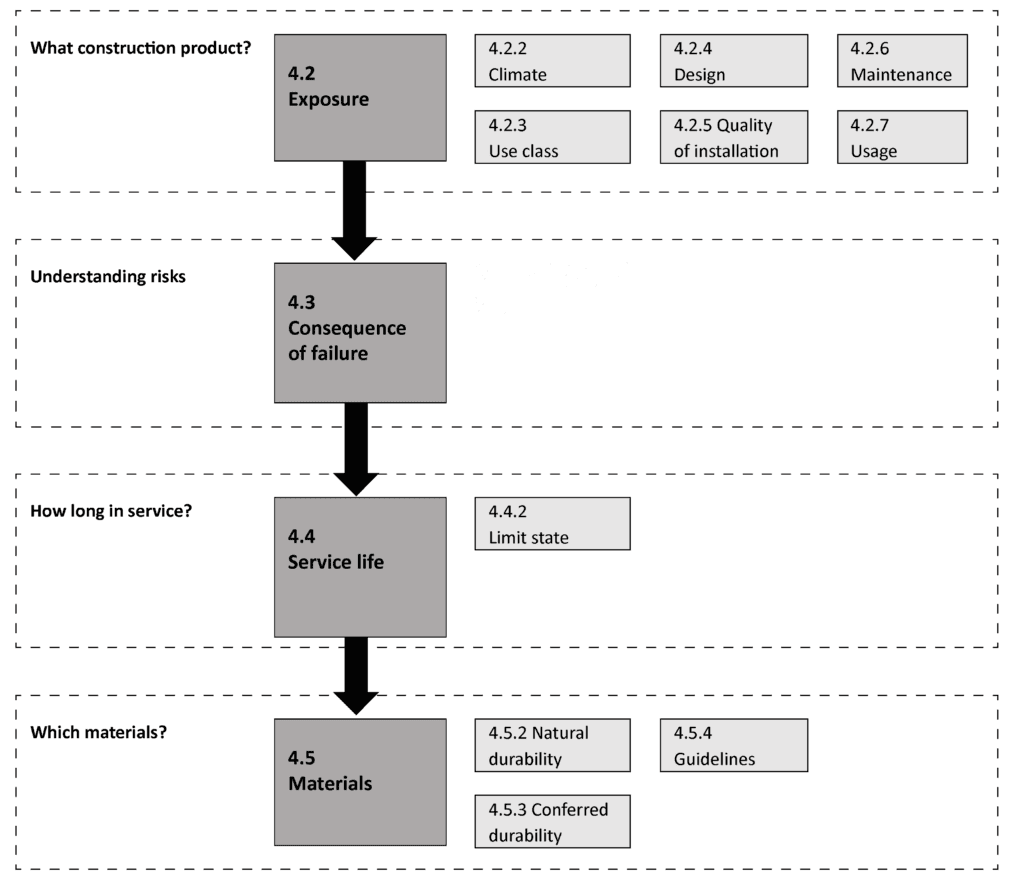The CEN standard EN 460 with the title “Durability of wood and wood-based products – Guidance on performance” gives a general principle of how to use wood and maximise service life.
This standard outlines a method for professionals like architects and structural engineers and others.
EN 460 gives a schematic diagram that outlined the process for determining the performance and optimizing the service life of wood in construction.
The decision-making process is structured as follows:
- Exposure of the Building Product:
- Climate: Assess the local climate where the construction is located, considering factors such as humidity, temperature, rainfall, and exposure to sun and wind.
- Use Class according to EN 350: Determine the appropriate Use Class for the wood, based on its intended exposure to biological agents and environmental conditions.
- Design:Plan the construction design to protect the wood from exposure and to facilitate its durability. This includes considering factors like water drainage, ventilation, and exposure to sunlight.
- Quality of Installation: Ensure that the installation of the wood components is of high quality, following best practices to maximize the durability and performance of the wood. (Work execution level)
- Maintenance: A combination of technical, administrative and organizational measures during the service life of an object, which serve to maintain or restore its functional condition. It includes inspection, servicing, repair and improvement
- Usage: Consider the usage patterns of the construction or building to anticipate areas of wear or stress and other factors.
- Consequence of Failure:
- Understand and evaluate the risks associated with potential failures of the wood components, considering both the likelihood and the potential impact of such failures.
- Service Life and Limit State:
- Estimate the expected service life of the wood, taking into account the factors above. Define the limit state, or the point at which the wood will no longer perform its required function effectively.
- Select Appropriate Materials:
- Choose wood and treatment methods suitable for the specific conditions and uses identified. Consider factors like durability, resistance to decay, pests, and weathering, as well as environmental impact.
- Guidelines:
- Follow European and national guidelines and standards for the the building or component, ensuring the chosen materials are suitable for their intended use and environment.


By following these steps, professionals can make informed decisions to ensure the optimal performance and service life of wood in their construction projects.
Read about EN Standards
Find this standard on CEN TC38 WG28